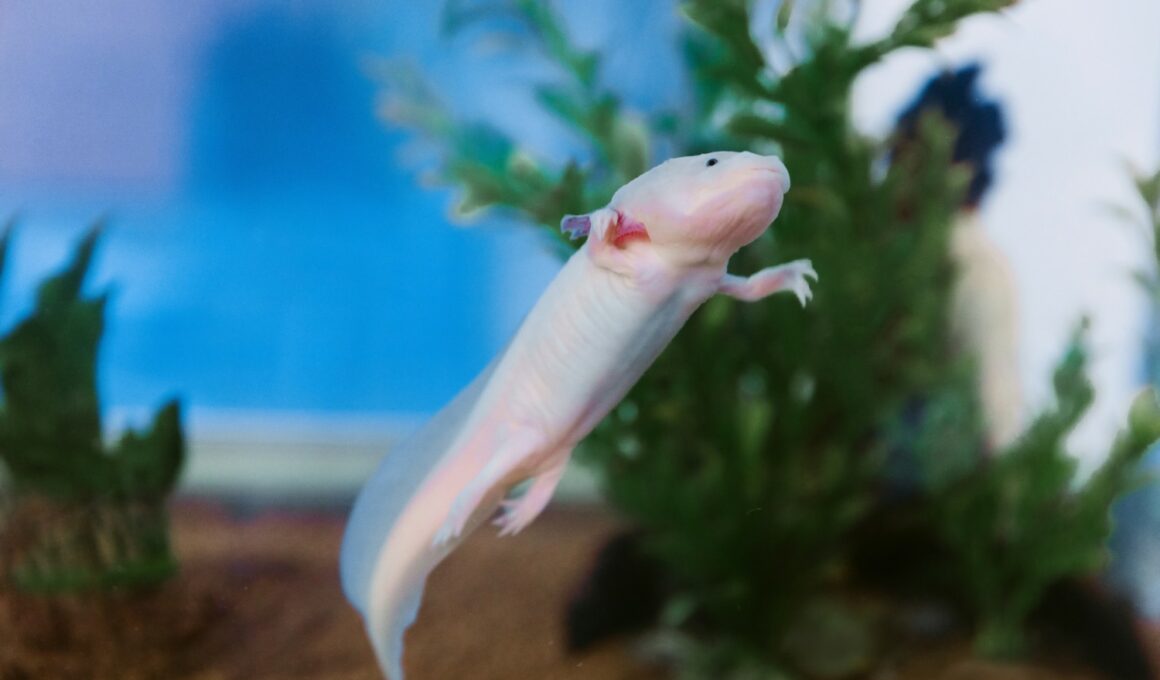In this article Show
Today, we’re looking at a list of the best tank mates for axolotls and tips for adding them to your aquarium with ease. Originating from the ancient lakes of Mexico, axolotls aren’t your typical aquarium residents. They’re one of the most fascinating creatures I’ve ever seen, and they look just out of this world.
But this isn’t just about their charming looks; axolotls have specific habitat needs that distinguish them from other aquatic pets. Creating the ideal environment for these aquatic salamanders is paramount, and a big part of that is ensuring they’re in good company.
Choosing the right tank mates for your axolotl is no small feat. But worry not! Based on years of experience with fishkeeping and raising axolotls alongside other aquatic pets like Neon tetras, I’m happy to guide you. Let’s get started.
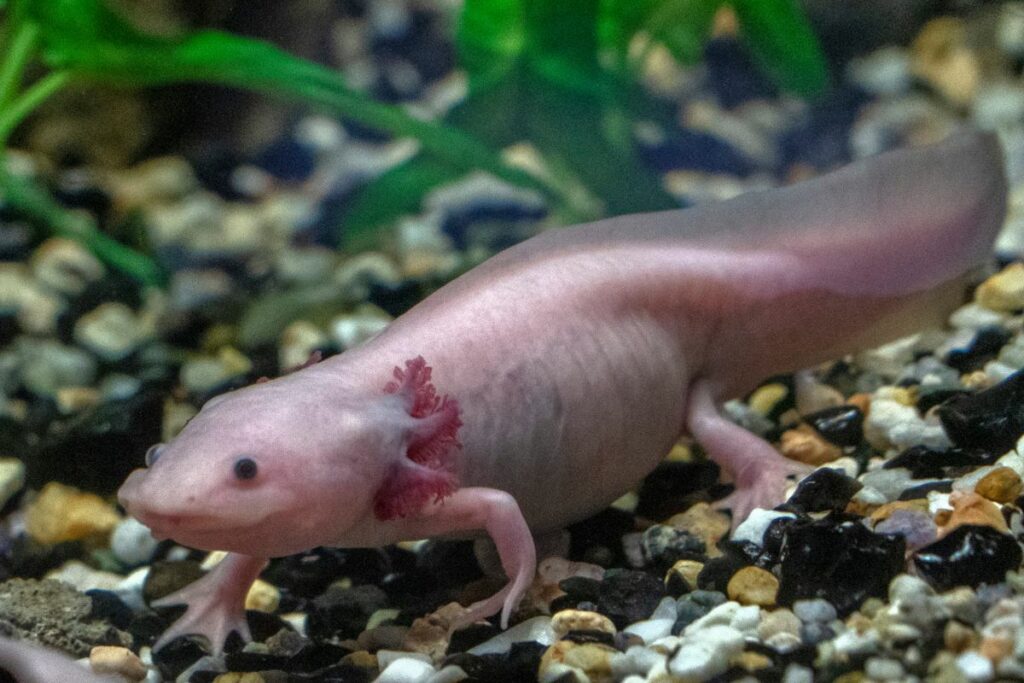
Best Axolotl Tank Mates
Selecting tank mates for axolotls requires both intuition and understanding. Not only do these species need to cohabit peacefully, but they also need to thrive alongside one another. Let’s delve deep into some ideal companions:
1. Snails
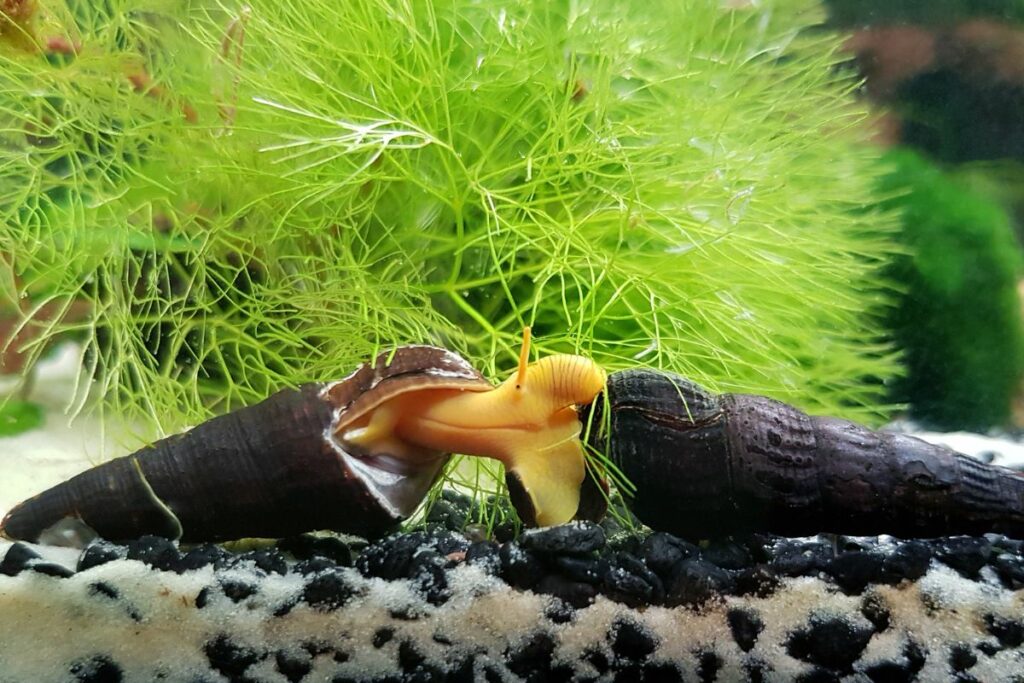
| Attributes | Details |
| Size | Small (Varies by species) |
| Diet | Ominivores (Algae, detritus) |
| Temperament | Peaceful |
| Care Level | Easy |
| Minimum Tank Size | Varies (10 gallons for many common species) |
Snails are a boon in aquariums. Beyond their serene, unhurried pace which adds a calm dimension to any tank, they are relentless algae controllers.
Whether it’s the common apple snail or the more ornate nerite snail, axolotls generally ignore them. Their hard shell provides adequate defense and minimal maintenance, requiring only occasional calcium supplements for shell health.
2. Ghost Shrimps
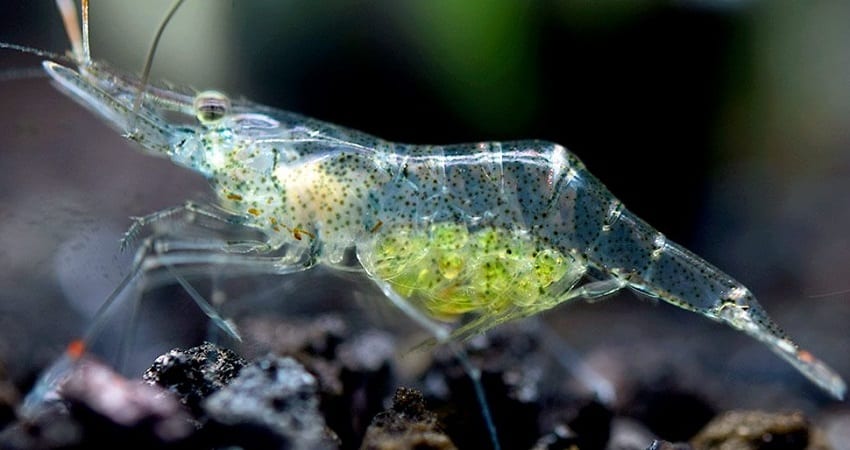
| Attributes | Details |
| Size | 1-2 inches |
| Diet | Omnivore (Algae, detritus, small particles) |
| Temperament | Peaceful |
| Care Level | Moderate |
| Minimum Tank Size | 10 gallons |
Ghost shrimps, with their transparent bodies, are like little aquatic phantoms. They serve a dual purpose: they add a unique visual element to tanks and are diligent cleaners.
Their tiny stature allows them to navigate spaces larger creatures can’t, ensuring a thorough clean-up of food bits and debris. While they can be vulnerable to larger, hungry axolotls, a well-fed axolotl generally lets them be.
3. African Dwarf Frogs
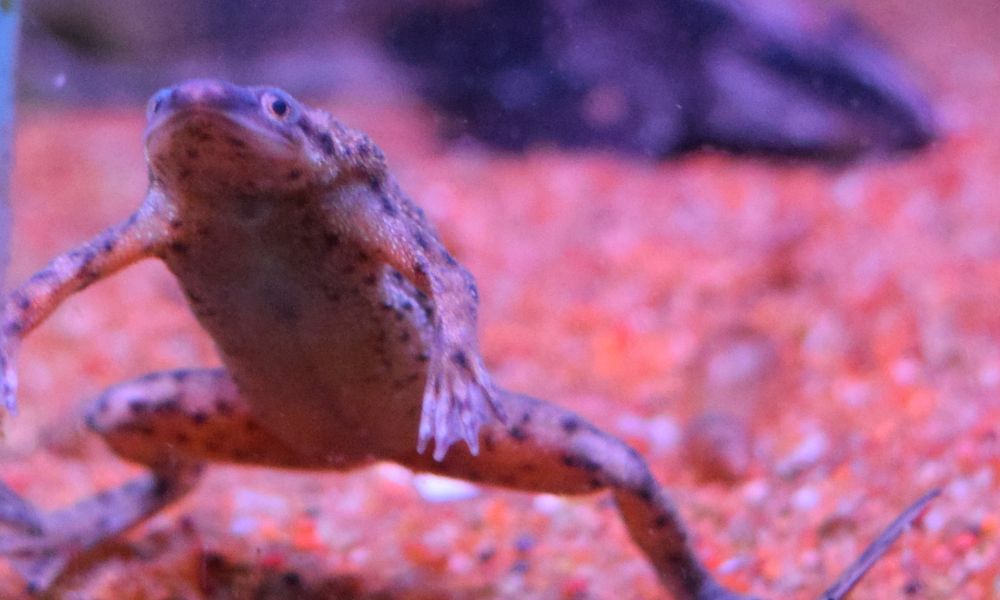
| Attributes | Details |
| Size | 0.6-2.4 inches |
| Diet | Carnivore |
| Temperament | Peaceful |
| Care Level | Moderate |
| Minimum Tank Size | 10 gallons |
African Dwarf Frogs are fully aquatic frogs known for their gentle nature and curious antics. These bottom dwellers spend most of their time exploring or lying motionless, mimicking floating plant debris.
Given that they aren’t too tiny, they can share a tank with axolotls. Their feeding habits, which include feasting on live or frozen foods like bloodworms, might even coincide with axolotl feeding times, making tank maintenance more straightforward.
4. Feeder Guppies
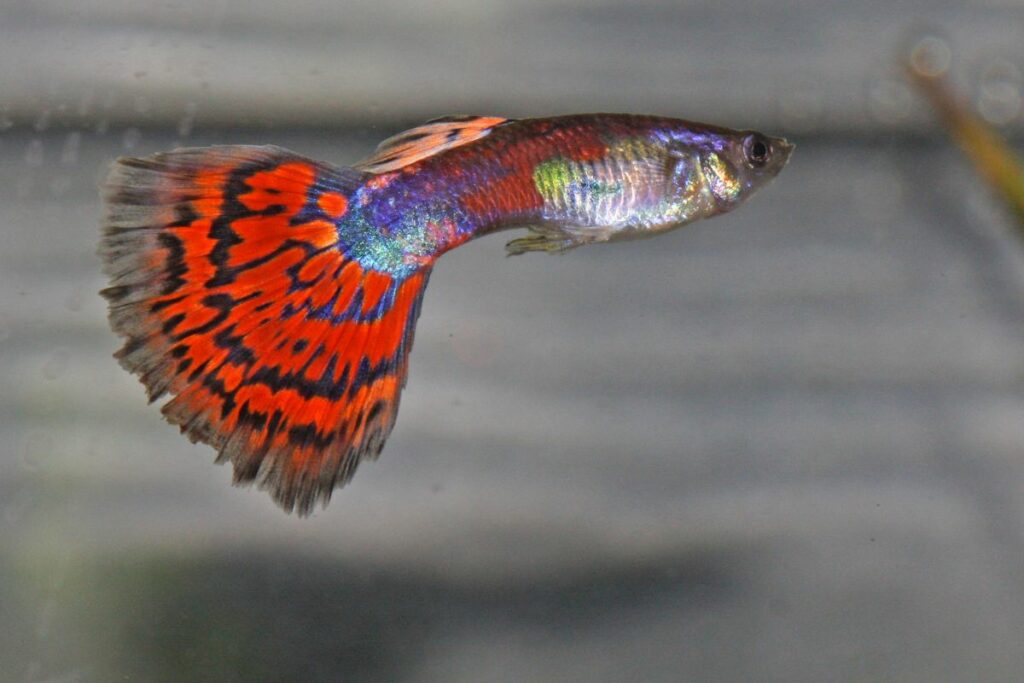
| Attributes | Details |
| Size | 0.6-2.4 inches |
| Diet | Omnivore |
| Temperament | Peaceful |
| Care Level | Easy |
| Minimum Tank Size | 5 – 10 gallons |
Feeder guppies are bright, swift, and resilient. While their name suggests their typical use as food, they can coexist with axolotls in a spacious tank with plenty of hiding spots.
Guppy fishes are agile swimmers, which reduces their chance of becoming prey. They breed prolifically, so their numbers remain steady even if a few become snacks.
5. White Cloud Mountain Minnows
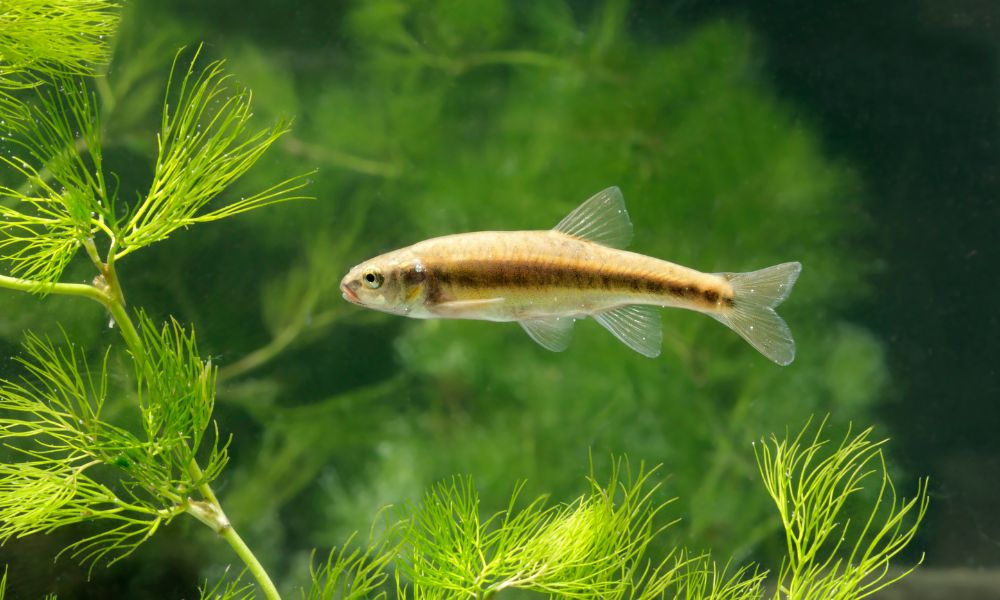
| Attributes | Details |
| Size | 1.5 inches |
| Diet | Omnivore |
| Temperament | Peaceful |
| Care Level | Easy |
| Minimum Tank Size | 10 gallons |
Native to cool streams, White Cloud Mountain Minnows are perfect temperature-compatible companions for axolotls. They are fast swimmers and usually swim in the mid to upper levels of the tank, reducing the likelihood of encounters with bottom-dwelling axolotls.
6. Cherry Barb
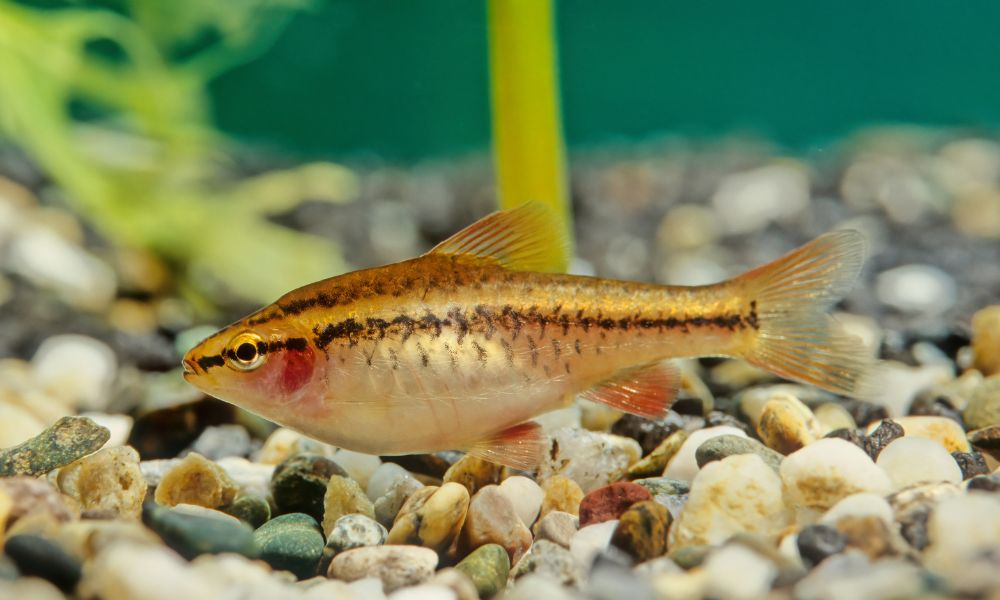
| Attributes | Details |
| Size | 1-2 inches |
| Diet | Omnivore |
| Temperament | Peaceful |
| Care Level | Moderate |
| Minimum Tank Size | 20 gallons |
Cherry barbs are colorful, peaceful, and active fish. They’re often seen darting between plants in the middle of the water column. Their vibrant color can add visual interest to your tank. However, like with other fish, it’s essential to ensure they aren’t nipping at the axolotl’s gills or appendages.
7. Dojo (Weather) Loach
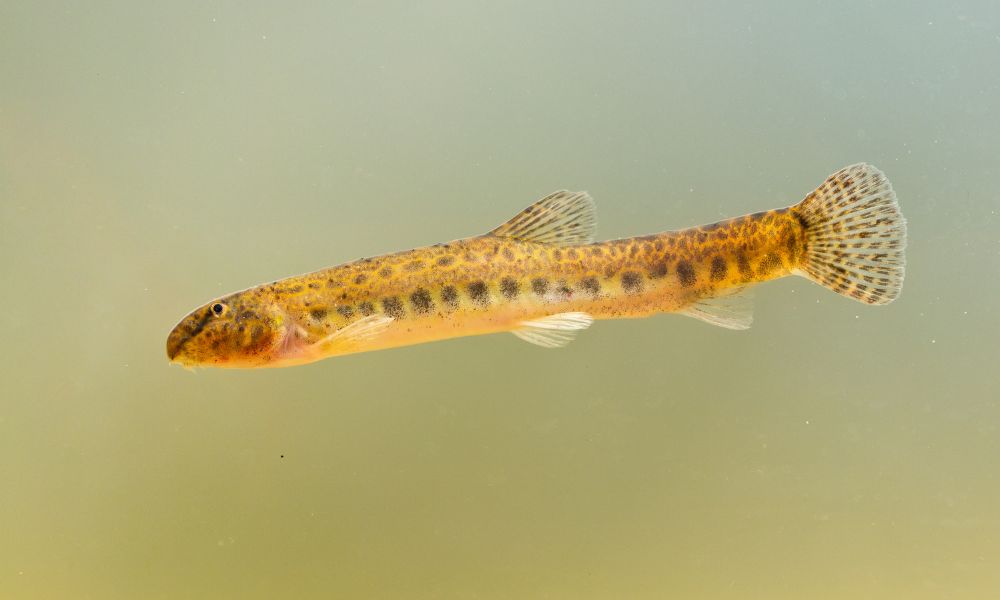
| Attributes | Details |
| Size | 8-12 inches |
| Diet | Omnivore |
| Temperament | Peaceful |
| Care Level | Easy |
| Minimum Tank Size | 30 gallons |
Dojo loaches, also known as Weather loaches due to their increased activity during atmospheric changes, are another species that prefer cooler water. They are peaceful and can grow quite long, making them less likely to be bothered by axolotls. Their serpentine movement along the tank floor is a joy to watch.
8. Reticulated Hillstream Loach
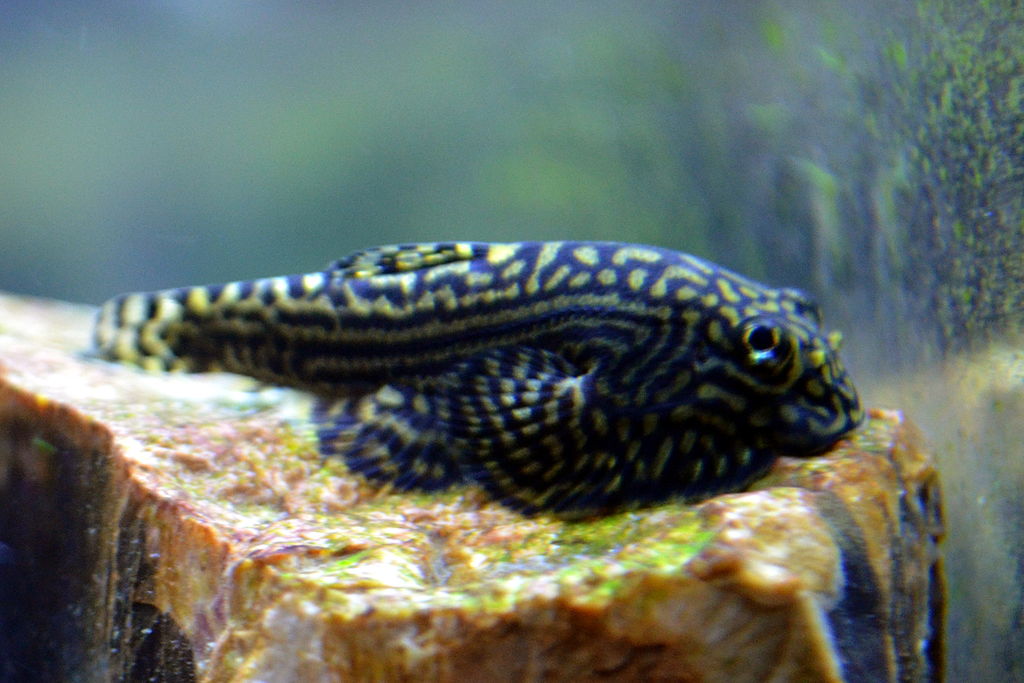
| Attributes | Details |
| Size | 2-3 inches |
| Diet | Omnivore |
| Temperament | Peaceful |
| Care Level | Moderate |
| Minimum Tank Size | 20 gallons |
With their unique flattened bodies and beautiful patterns, Reticulated Hillstream Loaches can be a great addition. They are algae grazers and will often be seen sucking on tank surfaces, cleaning off algae. Their preference for cooler waters makes them a good match temperature-wise.
9. Neon Tetras
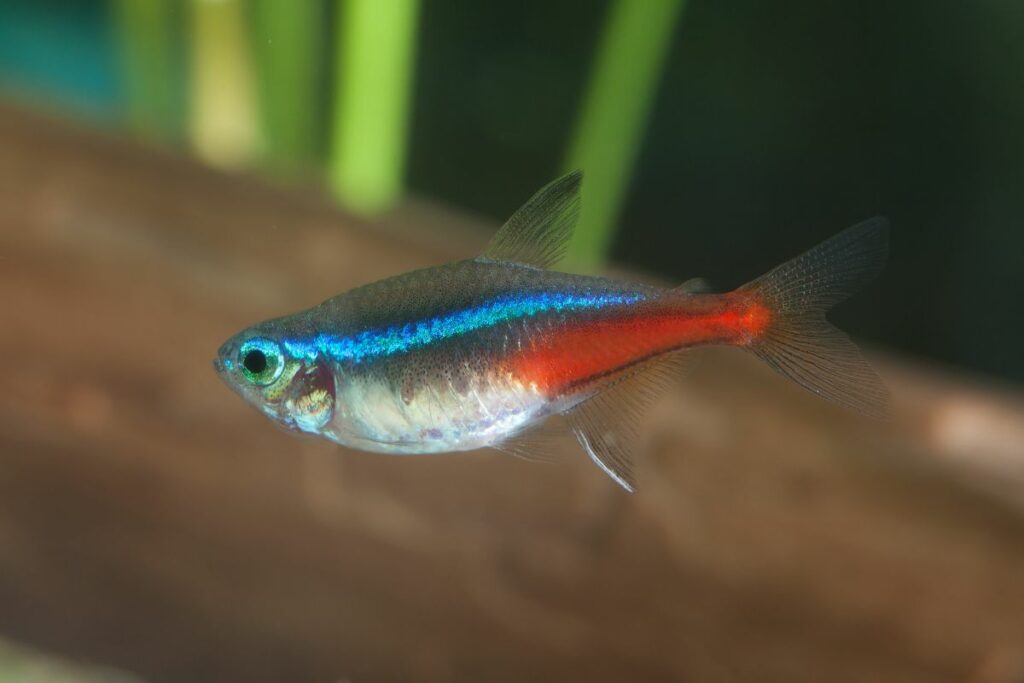
| Attributes | Details |
| Size | 1-1.5 inches |
| Diet | Omnivore |
| Temperament | Peaceful |
| Care Level | Easy |
| Minimum Tank Size | 10 gallons |
Neon Tetras, with their shimmering blue and red stripes, are among the most popular aquarium fish. They are fast, prefer to school, and are generally too quick for axolotls to catch. They’ll need a well-planted tank with plenty of hiding spots.
10. Rosy Red Minnows
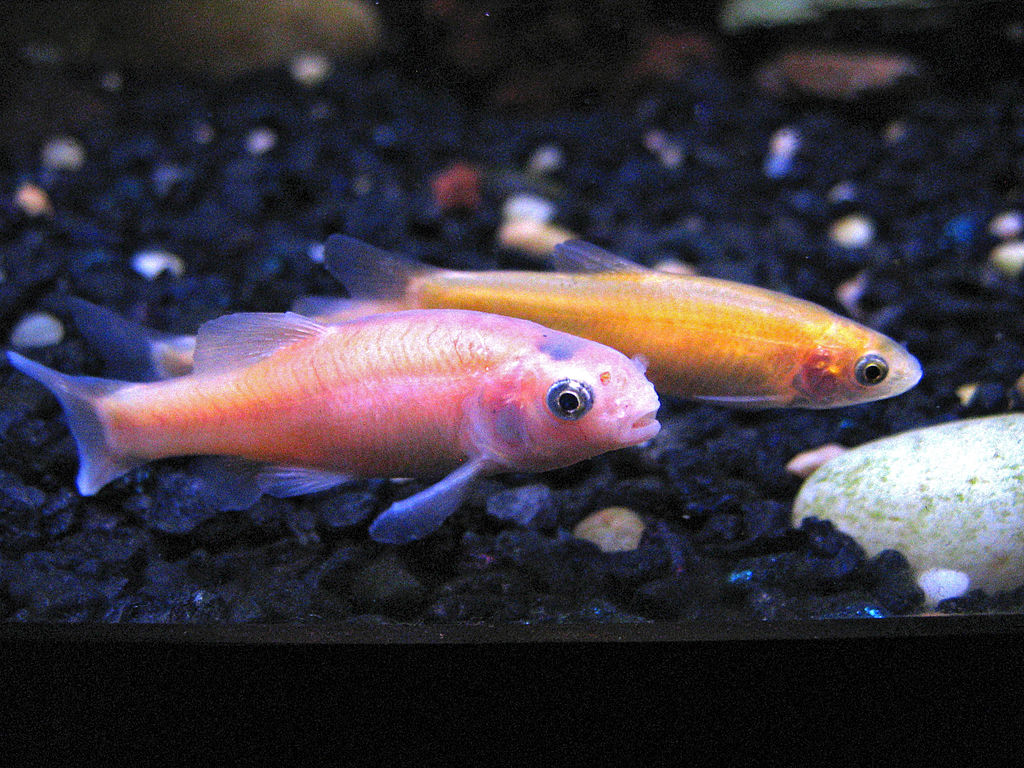
| Attributes | Details |
| Size | 2-3 inches |
| Diet | Omnivore |
| Temperament | Peaceful |
| Care Level | Easy |
| Minimum Tank Size | 10 gallons |
Often sold as feeder fish, these hardy minnows can be a good tank mate for axolotls. They are resilient and active, and their orange-pink hue adds a dash of color to the tank.
11. Blackworms
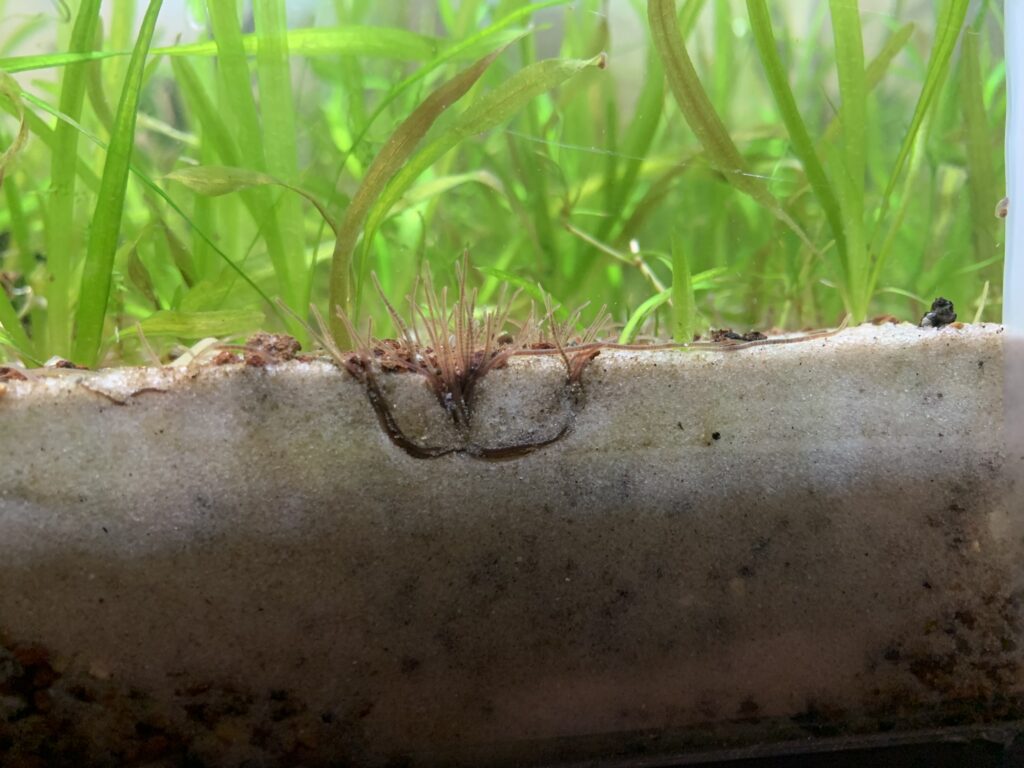
| Attributes | Details |
| Size | 1-2 inches |
| Diet | Omnivore |
| Temperament | Non-aggressive |
| Care Level | Moderate |
| Minimum Tank Size | Not applicable |
Blackworms can be kept as a live food source for axolotls. They can live in the substrate and will be naturally hunted by axolotls, encouraging the salamander’s natural foraging behavior.
12. Corydoras Catfish
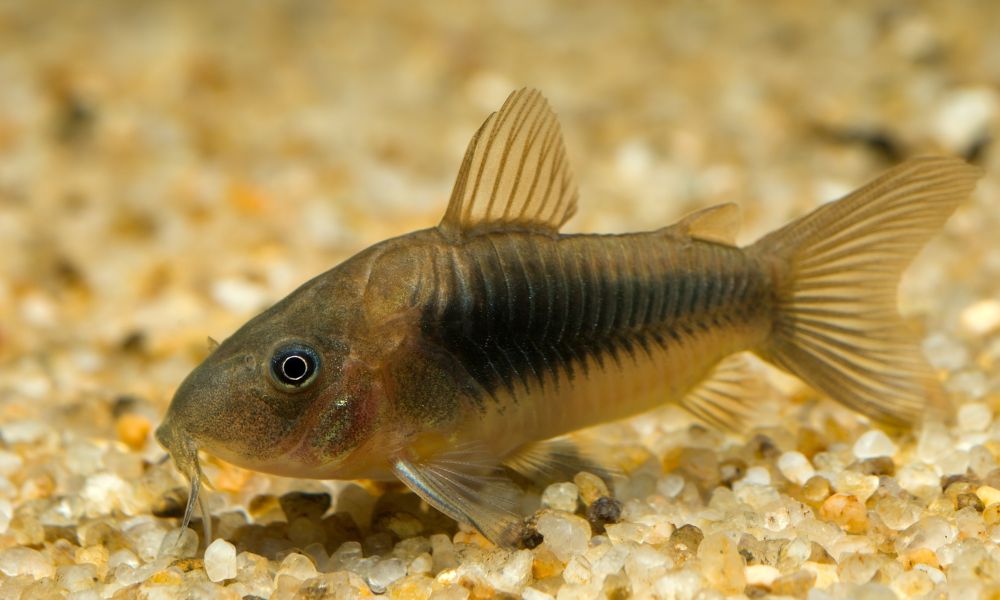
| Attributes | Details |
| Size | 1-3 inches (depending on species) |
| Diet | Omnivore |
| Temperament | Peaceful |
| Care Level | Easy |
| Minimum Tank Size | 20 gallons |
These armored catfish are peaceful bottom dwellers. Their tough exterior provides some protection against curious axolotls. They’re excellent scavengers, helping to keep the substrate clean.
Tank Mates to Avoid for Axolotls
While the idea of housing a variety of species in one tank can be appealing, axolotls have unique needs and sensitivities. As such, there are certain species that, despite being popular in the aquarium hobby, should be avoided as tank mates for axolotls. Here’s a detailed look at which ones and why:
1. Goldfish and Other Cold Water Fish
Goldfish, koi, and other cold-water fish are notorious for producing significant waste. This can rapidly degrade water quality, making the environment toxic for axolotls.
Excessive waste can lead to spikes in ammonia and nitrite levels, both of which can be harmful—even fatal—for axolotls. Moreover, the frequent water changes needed to combat this could stress your axolotl.
2. Smaller, Slower-Moving Creatures
Axolotls are opportunistic feeders with a natural predatory instinct. Smaller, slower-moving creatures, like certain snails, worms, or small fish, can easily become a tempting meal.
Even if you’re feeding your axolotl adequately, their natural instinct might drive them to hunt these smaller creatures, leading to an unstable tank environment.
3. Aggressive Fish
Fish known for their aggressive or nippy behavior, such as certain cichlids, tiger barbs, or bettas, pose a direct threat to axolotls. Axolotls have delicate external gills and skin.
Nippy fish might see these as an invitation, leading to injury or constant stress for the axolotl. Continuous stress or direct harm can reduce the axolotl’s lifespan and overall well-being.
4. Tropical Fish
Axolotls thrive in cooler water temperatures, usually between 60 to 68°F (15 to 20°C). Many popular aquarium fish are tropical and require warmer waters. Combining species with differing temperature needs means one or both will be in suboptimal conditions, leading to stress and potential health issues.
5. Bottom-Dwelling Species with Similar Habitats
Creatures like larger crayfish or other salamanders might seem like suitable companions due to their similar environmental needs. However, they can become territorial, leading to potential disputes with axolotls over hiding spots and space. These conflicts can result in stress, injuries, or even fatalities.
Factors to Monitor after Introducing New Tank Mates
Introducing new tank mates to your axolotl’s environment is a delicate process. Once the new additions are in place, it’s crucial not to consider the job done.
Observing specific factors post-introduction can distinguish between a thriving, harmonious aquarium and one filled with conflict or even casualties. Here’s what you need to keep a close eye on:
1. Behavioral Changes in Axolotls
After introducing new tank mates, observe your axolotl’s behavior closely. Signs of stress can include a sudden change in their usual habits, frequent hiding, reduced activity, or frantic swimming.
A reduced appetite, refusal to eat, or even a complete change in their feeding pattern can also indicate stress or discomfort. Recognizing these signs early is essential, as prolonged stress can lead to health issues for axolotls.

2. Health and Behavior of the Tank Mates
Just as you monitor your axolotl, you should closely monitor the new tank mates. Check for visible injuries, especially if they are smaller or slower-moving than the axolotl.
Injuries could be from axolotl nips or from conflicts among the tank mates themselves. Also, note any sudden changes in their behavior. Hiding more than usual, erratic swimming, or a sudden decline in activity can indicate stress or potential health issues.
3. Water Quality
Introducing new inhabitants means a potential increase in waste, which can impact water quality. Regularly test the water for ammonia, nitrite, and nitrate levels. Elevated levels can indicate that the tank’s biological filtration is struggling to keep up with the increased waste.
Ensure that the water remains clear, without any unusual cloudiness or color changes. Remember, axolotls are particularly sensitive to water conditions, so maintaining optimal water quality is paramount for their well-being.
Tips for Introducing New Tank Mates to Axolotls
Integrating new tank mates with axolotls demands careful preparation and patience. A rushed or haphazard introduction can lead to conflict, stress, or even health complications for the tank’s inhabitants. Here are some essential guidelines to help ensure a smooth transition:
1. Quarantine New Additions
Before introducing any new tank mates to your axolotl’s main aquarium, it’s crucial to quarantine them for a period. Typically, a 2-4 week quarantine is recommended. This allows you to observe the new additions for signs of illness, parasites, or other health issues.
A quarantine prevents potential contaminants or diseases from being introduced into your established tank. Moreover, during this period, you can treat any apparent diseases or conditions without risking the health of your axolotl or other tank inhabitants.
2. Slow Introduction
Once you’re sure that the new tank mates are healthy, don’t just place them directly into the axolotl’s tank. Begin by placing them in a separate container within the main tank, allowing both parties to get used to each other’s presence without direct contact.
This method can reduce potential territorial disputes or aggressive behaviors. After a few hours or even a day, you can gradually mix the water from the main tank into the container.
Once acclimatized, you can then release the new tank mates into the main aquarium. This slow introduction reduces the risk of shock due to sudden changes in water parameters.
3. Maintain Optimal Feeding Schedules
One primary reason axolotls might show predatory behavior towards tank mates is hunger. Ensuring that your axolotl is well-fed can significantly reduce the chances of them seeing new additions as potential food.
Stick to a consistent feeding schedule and provide a balanced diet. Offer them their favorite foods like earthworms or axolotl pellets in the initial days following the introduction of new tank mates.
A well-fed axolotl is less likely to be aggressive or overly curious about its new companions.






